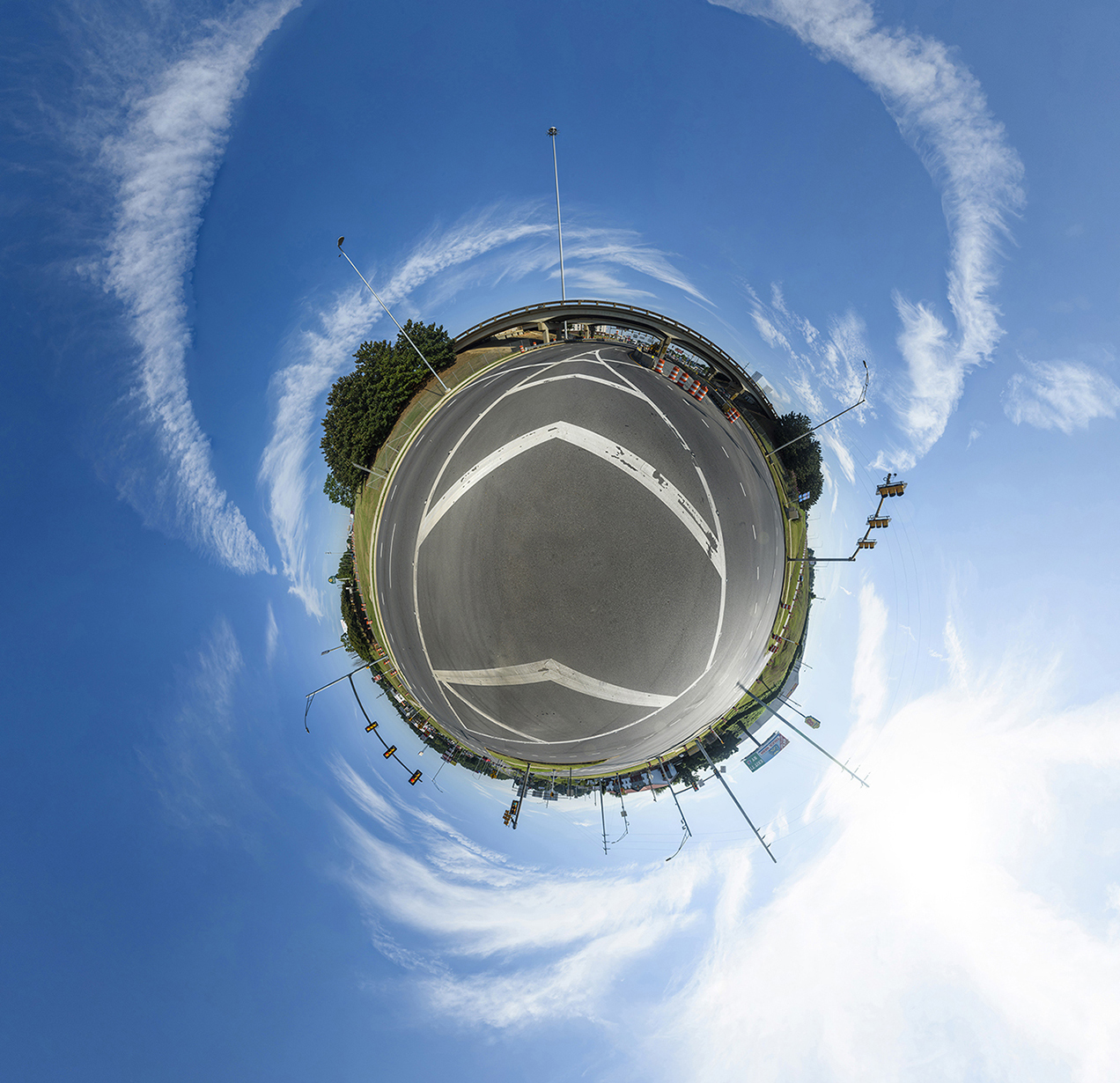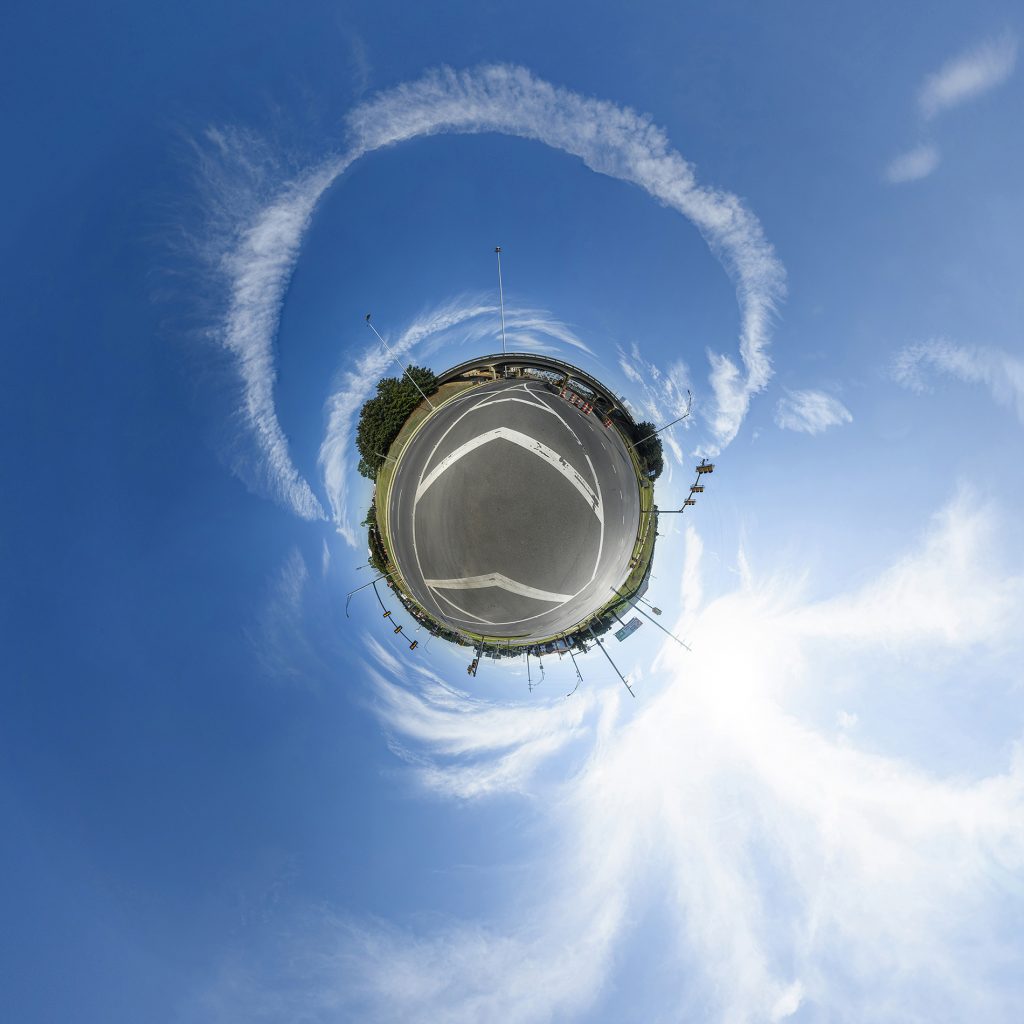
UA Researchers turn Tuscaloosa into traffic laboratory to improve transportation
Green. Yellow. Red. Go. Slow. Stop. Simple instructions commanded by a seemingly simple machine – the traffic light.
The technology is as old as the Industrial Revolution, with the first light, two gas-powered flames, controlling traffic in London in 1868. They have improved since, of course. The current three-light system and electricity came in the first quarter of the 20th Century. In the 1950s, computer-controlled detectors were installed in some lights.
Today, there are about 650,000 signals controlling traffic in the United States, with the vast majority of them left alone after installation. Only when motorists complain do governments tinker with the signal timing and detection.
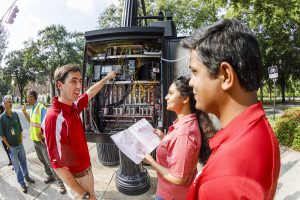
A team at The University of Alabama is working to change that, modernizing traffic lights to become smarter and communicate with vehicles passing through. These changes are needed, they say, to improve the flow of traffic because building more roads and adding lanes in America’s most congested areas is no longer an option.
“We’ve reached a point in a lot of places in America where we can’t build more roads, so we need to operate them more efficiently,” said Dr. Alex Hainen, a civil and traffic engineering researcher at UA. “We’re using our resources the best we can and applying technology so we can use our transportation network in the most efficient manner.”
Hainen and other researchers from UA have struck a unique partnership with the Alabama Department of Transportation, or ALDOT, and the local cities of Tuscaloosa and Northport to turn the area around the University into a traffic laboratory. Throughout the area, 85 traffic signals are equipped with data logging and radio communication devices that collect data from real traffic. It’s not just used for academic study, but to improve traffic in the Tuscaloosa area now.
“All these 85 intersections are bringing back data,” Hainen said. “We don’t just have a laboratory set up in a room; the whole city is a laboratory.”
Tucked inside a building on UA’s campus is the control room of that laboratory, ALDOT’s state-of-the-art Traffic Management Center. A bank of screens and computers help ALDOT monitor traffic, communicate issues and, unique to Tuscaloosa, respond to traffic patterns by changing traffic signal timing.
“We want to be more proactive than reactive,” said Jonathan Mills, ALDOT’s Transportation Systems Management and Operations Engineer. “The goal is to have traffic across the entire city moving efficiently and arriving on green as much as we can.”
The project started with data logging equipment connected to the more than 150 wires at the computer controlling one campus intersection in 2014. Then it spread to 85 intersections over the next three years.
“Traffic signals are computers, and we’re turning them into smarter computers,” Hainen said.
All the data collected can tell traffic engineers how an intersection is handling traffic flow. Without data, it is hard to know if tweaks to the light work. Hainen compares it to a vehicle’s dashboard. The computers in the traffic center give a gauge on an intersection’s performance.
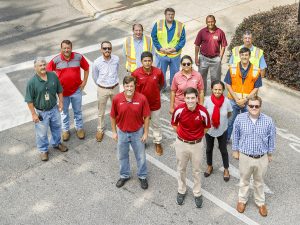
Success means more vehicles sailing through an intersection without stopping as well as safe travel for bicycles and pedestrians, using sensors placed farther back from the intersection to tell the signal how many cars are coming.
Say an intersection has 100,000 vehicles a day. If tweaks to the signal keep 10 percent of those cars from stopping, that’s 10,000 vehicles that do not stop for 30 seconds, saving 83 hours of people’s time each day.
“If you think about society in moving goods and people, time is money. If people are stopping and waiting there, it takes longer for people to get where they need to be,” Hainen said. “Our transportation system is really important to keep people and goods moving.”
The project started showing results almost immediately. At the 85 intersections included in the project, between 5 and 15 percent more vehicles arrive on green.
“If you drive around Tuscaloosa, the traffic may not be what we want it to be, but if we wouldn’t have done anything, it would have been a lot worse,” Hainen said.
Long term, Hainen’s team will use the data from Tuscaloosa to help the transportation sector to improve computer algorithms in traffic lights.
But there is more to the effort than recording traffic data and tinkering with lights. On each of the 85 intersections, researchers installed dedicated short-range communication radios, or DSRC radios. These radios can communicate with vehicles.
Tuscaloosa was the first city in the state, and one of a handful in the country, to outfit traffic signals with the technology. There’s a national challenge for each state to have 20 radio communication devices installed. Tuscaloosa has 85.
“We expect significant advances in the U.S. transportation system during the next 10 years, made possible through many of the technologies currently being tested in Alabama,” said Dr. Bharat Balasubramanian, executive director of UA’s Center for Advanced Vehicle Technologies. “Some of the benefits we will see from these advances are improved safety, optimized traffic flow and better fuel economy.”
Why use sensors and detectors if a car can tell an intersection it’s coming? That’s more data engineers can use to make decisions. Only new, luxury Cadillacs come equipped with DSRC communication, but it’s predicted more car companies will come on board as more states install the radios.
“Everyone says this is way off down the road, but it may be closer than what we want it to be,” said Nick Crane, who was ALDOT’s Transportation Systems Management and Operations Manager during the first years of the project.
“With limited capacity on our roadways and limited funding, and with recent increase in fatalities, we need to push toward things that can increase mobility, safety and commerce,” Crane said. “We cannot just use the same old tricks.”
There are kinks to work out before this future arrives, and another project involving Hainen and two computer science researchers, Drs. Xiaoyan Hong and Travis Atkison, hopes to address these issues.
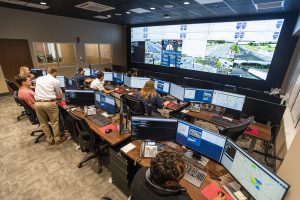
When vehicles communicate to traffic signals and to each other in the future, they will need a computer network to do so. It would be too slow to send information back and forth to a central server because decisions need to be made quickly based on current traffic conditions, Hong said.
The vehicles and infrastructure will need to create a local computer network on the fly, existing on the computers in the connected cars and traffic lights. Unlike more stable connected networks, these networks will constantly change as cars come and go.
“The fact that the cars are moving creates an interesting problem for us to solve,” Atkison said. “This is not a centralized system.”
Hong and Atkison’s team is working to improve these networks, using lab simulations and the DSRC radios in the field to improve the security and protocols needed, figuring out how to move the data needed for an intersection to allow traffic to flow safely and efficiently between vehicles that enter and leave the space.
“If we can sustain the network, that means we can sustain the computing job using these connected resources,” Hong said.
In fact, it’s possible traffic lights won’t be needed in the future if the vehicles communicate with each other, and that is part of the research, as well. Still, there are hurdles to overcome before that future.
“There’s still this whole aspect of working out and figuring out how these things are going to work,” Atkison said. “We can’t wait until all the technology is in place because then we wouldn’t have anything. We have to build now.”
Funding for these projects comes from two grants from the National Science Foundation as well as ALDOT, the cities of Tuscaloosa and Northport, and from UA through the Alabama Transportation Institute, Center for Advanced Public Safety and the Center for Advanced Vehicle Technologies.
Dr. Hainen is an assistant professor of civil, construction and environmental engineering. Dr. Hong is an associate professor of computer science. Dr. Atkison is an assistant professor of computer science. Dr. Balasubramanian is a professor of mechanical engineering as well as electrical and computer engineering.
